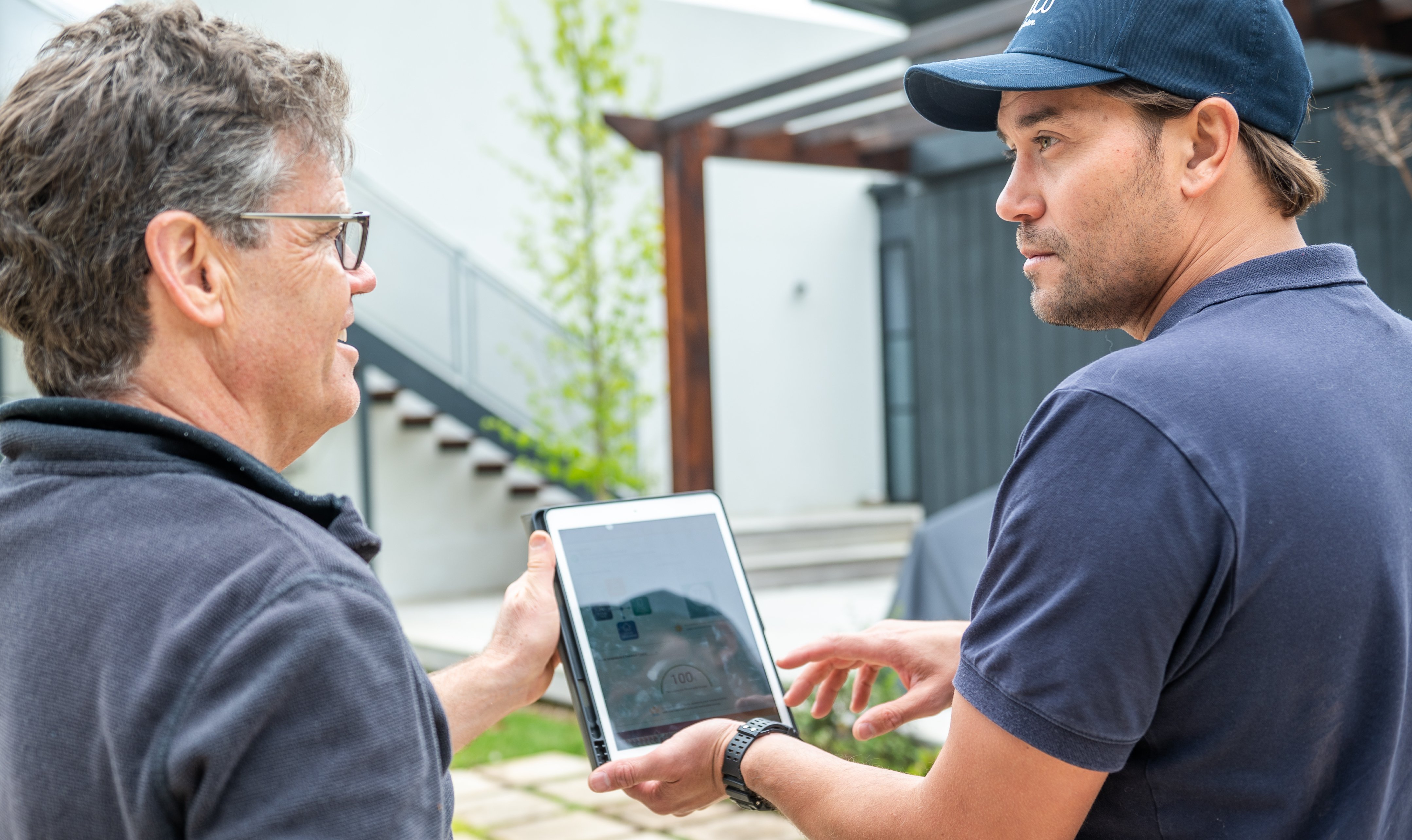You can charge a solar battery directly from a solar panel, but it is not advisable. Charging a solar battery directly from a solar panel means the electricity’s voltage and amperage are not regulated. This causes potential damage to the solar battery and may require it to be replaced sooner. Instead, it’s best to use a solar inverter, which controls the electrical current flowing in and out of the solar battery, creating safer charging.
This question reverberates around the solar industry, and the reason is simple: the less solar equipment you need to purchase, the cheaper the cost will be. Most companies don’t have affordable and innovative pricing models like Plico with one low weekly fee, so homeowners feel pressure to minimise expenses.
While it’s necessary to consider costs when choosing a solar + battery system, failing to incorporate an inverter will cost more in the long run: the solar battery will degrade quickly and need replacing. Additionally, a solar inverter is imperative to powering your alternative-current (AC) appliances.
How do I set up a solar panel to charge a battery?
A wired connection is necessary for a solar panel to charge a battery. Solar panels generate power that can charge solar batteries. Wires are what allow energy to travel from one point to another. Power can travel directly from a solar panel to a battery (a precarious arrangement, to say the least) or through a moderation device, such as a solar inverter. For a direct connection, the negative terminal of the solar panel is wired to the battery’s positive terminal and vice versa.

What do I need between a solar panel and a solar battery?
You need an inverter between a solar panel and a battery for safe charging. An inverter is a device that regulates the flow of electricity within a solar system. After the solar panels gather electricity, it flows to the solar inverter. The solar inverter conditions the electrical current depending on where it needs to go. For the household, the inverter converts the electrical current from direct (DC) to alternating (AC), making it compatible with home appliances.
For the battery, the inverter adjusts the amperage and voltage of the electrical current to an optimal level for storage. Solar systems may have separate solar and battery inverters or one hybrid inverter, which works for the whole system. Picking an inverter that matches the power capabilities of the rest of the solar equipment is essential for optimal functioning.
How fast will a solar panel charge a battery?
How fast a solar panel charges a battery depends on the system’s power generation and the battery’s efficiency. The more power a system’s panels generate, the more excess power a battery can receive. A solar system’s power generation is primarily decided by the capacity of its solar panel array and the weather. The equation is simple: more panels capture increased amounts of sunlight, generating higher quantities of power. Receiving more power over time translates to faster battery charging. However, the rate of charge is limited by the size of the inverter.
How many solar panels do I need to charge my battery?
The number of solar panels you need to charge your battery (or batteries) depends on your household energy use. Power generated by solar panels fulfils household demand first before sending the remaining energy to the battery. Therefore, there must be enough solar panels to create excess energy that can be sent to the battery.
However, when considering the number of panels, you must also consider the size and efficiency of the panel type used. Consequently, considering the total capacity of a solar array is more valuable than the number of solar panels.
Battery efficiency
A battery’s efficiency rating determines how much power it loses when charging or discharging. Higher efficiency ratings mean less electricity is lost in charging, and the battery fills up faster. You must also factor in its size to know how long it takes to charge a battery completely. The size of your battery will depend on how much power your household needs.
How do I know when my solar battery is fully charged?
The best way to know when your solar battery is fully charged is by checking your inverter. Both battery inverters and hybrid inverters can be used for this. Battery inverters directly track the charge level of solar batteries, whereas hybrid inverters track electricity within the whole solar system. Different inverter models have their ways of displaying charge levels, so check your inverter’s manual to clarify this.
For Plico members, the user-friendly app provided for every Plico solar + battery and battery-only system allows for transparent monitoring.
What do solar panels do when batteries are full?
Solar panels continue generating electricity when batteries are full. This electricity can be fed back into the grid if a solar feed-in tariff is available where you live. A solar feed-in tariff is a payment for supplying additional power to the electrical grid. If the electricity from the solar panels is not used or stored in a solar battery, it dissipates.
In some cases, solar exports are limited, or you may not receive the tariff if you have a larger system (for example, a 3-phase system), making battery storage all the more important to maximise your solar savings.
Choosing a solar + battery system
The equipment in solar + battery systems is complex, with each piece relying on the others to operate. Technological compatibility drives performance, something Plico is focused on with our solar + battery systems.
Considering solar? Chat with one of the switched-on Plico team members to see if it’s the right move for you.
Have a question about solar + battery?

